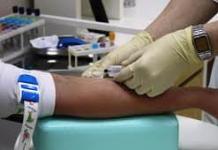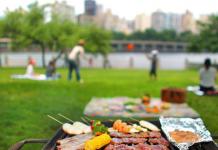Development of the implemented project "Nature Connoisseurs"
- Introduction
- Development of an ecological project.
- Implementation of an environmental project.
- Conclusion.
- Used Books
- Application.
Introduction.
The time has come when information about the state of the environment has become available. This means that we began to realize and understand the seriousness of the problems associated with the environment.
Man, using his various abilities, created a habitat for himself. No one will argue that it is convenient, but hardly anyone will argue that it is just as harmful for our planet, which is still alive.
Scientists have carried out a lot of scientific research and made disappointing assumptions. After several decades, water, air and soil can be poisoned so much that human life on earth will become impossible.
I am very glad that the attitude towards the environment is changing. But the current situation requires the formation of ecological thinking, that is, the introduction of ecology in all sciences and in all spheres of human activity. And I believe that it is necessary to start engaging in environmental education and upbringing as early as possible.
To increase the effectiveness of environmental education and upbringing, additional forms and methods are now proposed in this area, which also take into account modern psychological and pedagogical theories and technologies. These forms and methods involve students in a variety of activities, using the interconnection of class-lesson, extra-curricular and extra-curricular forms of work. 1
Additional environmental education can be carried out in the following areas:
- Development of programs for additional environmental education for students.
- Development and implementation of environmental projects.
- Organization and conduct of circle work on ecology on the basis of the school.
- Organization of additional environmental education for students during vacation time on the basis of children's health camps.
By implementing various forms of activity in the field of environmental upbringing and education, it is possible to achieve an increase in the effectiveness of environmental education of students.
In my work, I want to tell you how I implement such a type of activity as the development and implementation of environmental projects.
- I.Development of an ecological project.
The project should be based on research, creative, socially significant activities of students, aimed at promoting the identification and solution of environmental problems in the community. It may include a set of activities that address environmental issues and aim to develop the social activity of students. 2
The project can be implemented in an urban (rural) area, a small village on the basis of a school.
The main principles of the project can be:
- focus on identifying environmental problems in a specific area;
- assessment of the state of the environment;
- personal participation in solving local environmental problems, caring for the environment in the place of residence;
- setting for research and practical activities.
The goal of the environmental project is to create conditions for the development of a sense of ownership in solving environmental problems through the inclusion of students in various activities to study and improve the local environmental situation.
The implementation of the project involves:
- expanding the information space in order to increase the awareness of students about local environmental problems and ways to solve them;
- organization of practical environmental protection, research, creative activities;
- to give the work a public outcry;
- providing students with opportunities and assistance in solving local environmental problems.
The work on the project presupposes significant independence of the participants and does not require regular classes on the basis of an educational institution (school). It can be coordinated with the city (district) department of public education and rely on the help of teacher-consultants (teachers of ecology, biology, chemistry), class teachers, as well as parents.
The work on the project can be built in three stages: preparatory, main and final.
The main task of the preparatory stage is to enhance the activities of students, their interest in studying the natural environment.
As the main activities of this stage, you can use:
- approval of the organizing committee of the project;
- identification of project participants;
- acquaintance with the materials of the project (conducting conversations in schools, consultations about environmental problems of the area and the importance of students' activity in solving these problems through their participation in this project);
- independent research activities of students (filling out the questionnaire of the project participant).
At the main stage, the project participants independently perform specific types of creative and practical activities (three types to choose from).
Project participants may be offered:
- to issue an information leaflet (wall newspaper) about the problems or ecological situation of your settlement;
- prepare informational material on the ecology of your place of residence for publication in a local newspaper or for speaking on local radio;
- to conduct a conversation in the children's team (class) on an environmental topic;
- draw up an ecological map of the investigated area (microdistrict of a city, village, street, yard) with the designation of environmentally unfavorable (dangerous) places;
- prepare your own environmental project (cleaning of a river, a spring, elimination of landfills, recycling of household waste, saving energy, water, etc.).
The final stage involves summing up the results and awarding the winners.
Implementation of an environmental project.
For several years now, an intellectual game "Nature Connoisseurs" has been held in our region. The main objectives of this game are:
Identification of children with high intellectual abilities and interest in independent cognitive activity among students;
Inclusion of students in creative collaboration;
Raising a respectful attitude towards nature in children.
The game is played in three stages.
The first stage is the preparation of the material by both teachers (tasks for an intellectual game) and children (one of the competitions is the presentation and defense of the oral journal, as well as the defense of the team)
The second stage was a game that was held among the schools of the cluster association (MOU secondary school in the village of Privolzhskoye, in the village of Raskatovo, in the village of Pavlovka). Similar games were held among other cluster associations of the Marksovsky region as well as the city of Marx.
The third stage is the final game. Its participants are the winners of the zone games.
The tasks of the game corresponded to the 4th grade curriculum on the subject "The World Around", were both subject and interdisciplinary in nature. The participants in the game were students of 4 grades. Teams of 5 people. The assignments were compiled by a subject group of primary school teachers, except for teachers preparing teams. The zone games were held in February and the final game in March.
This year the 4th grade is us - 20 of my students and me. Since we know in advance about participation in this game, the preparation began at the beginning of the school year. And it just so happened that it was carried out in the form of an environmental project.
Once in the lesson, the guys began to argue about the meaning of the words "primrose" and "snowdrop". Some believed that this was the same thing, others objected to them. I invited the guys to figure it out for themselves. They responded with joy.
Environmental education goes through a series of stages. We decided to go through them all.
The first stage was the stage of admiration. The guys decided to put together a collection of artistic images of primroses or snowdrops. Many photographs and drawings have appeared. One of the students added that there are also many poems about snowdrops and primroses. The collection has expanded. The guys themselves began to draw the long-awaited spring. (Appendix 1) Four people volunteered to work with this collection. We now have editors. They took material, sorted it.
The guys asked to go with them on an excursion to the forest and show them where the snowdrops would grow. They were interested in what is now in this place, and what kind of places they are. So the second stage has come - the stage of observation, experience and comprehension of what was seen and heard in nature. A group of guys appeared who noticed that these places were wet, but in spring they were open to the first sun. A new group has arisen - a group of researchers. They began to write down our observations and conclusions. Some guys made sketches.
They also noticed heaps of debris, broken trees, a trampled clearing. The guys were very indignant, and even frightened, suddenly they would not be able to see snowdrops here in the spring, suddenly they would not wake up in the spring after such treatment of them. And with this we smoothly moved on to the third stage. The children have strengthened their desire to preserve the beauty of nature and increase its wealth.
A third group has arisen - the group of ecologists. We cleared the place of debris. And our project continued to exist.
Each group had its own goal. Their collected collections were replenished.
In nature studies, I tried to keep this work and groups. This was facilitated by the topics of the lessons. We started to study the topic "Natural zones of Russia".
At the beginning of the lesson, each group received their assignment and worked on it, by the end of the lesson we made preliminary conclusions. At home, the guys continued to add information to their messages. The result was a game by stations. (Appendix 2) The stations "Geographic", "Zoologicheskaya", "Game", "Botanicheskaya" were proposed.
So, when it came time to process the accumulated material and prepare an oral journal, we were faced with a difficult task. After much debate, we decided that we would choose primroses, five according to the number of team members. The selection criteria will be:
- The plant must be a primrose or snowdrop.
- It is listed in the Red Book of the Saratov Region.
- It is medicinal.
- A lot of material about this plant has been collected.
Team members were elected by secret ballot. I must say, the guys took this with great responsibility. The most active students were selected. There were no grievances and arguments. But the guys were faced with the task of answering the question of what a primrose is and what a snowdrop is.
The conclusion was drawn from the books by team members.
All early flowering plants are called snowdrops. Primroses, snowdrops are the names of early flowering plants. They are also called by scientists ephemera and ephemeroids.
All students in our class contributed to the creation of our oral journal. The researchers selected the material. The editors arranged it. Environmentalists have helped prepare the pages for the Red Book and Plant Protection. We bring to your attention the result of this work, our oral journal. (Appendix 3)
Conclusion.
I am not in my power to push aside the tragic consequences of people's neglect of nature, but I share my worries with my little students, starting from the first grade, I try to instill in them a thrifty love of nature. Together we are thinking about what can be done to make our land more beautiful, greener, richer, where and how we can and should rest, and which places are better to bypass, we identify the connection between the state of nature and human health.
I bring the guys to the conclusion: nature is defenseless in front of man. But if we do not take care of the biosphere, this thin living outer shell of the Earth, then we will witness the extinction of life on our beautiful planet.
My pain for the destruction of natural balance by man is passed on to children. I would like to believe that our lessons of kindness and love for our native nature will not be forgotten.
Talking about mushrooms, insects, birds, wild animals, I try to show not only the diversity of wildlife, but also the relationship of different species. As a result, children think about the fact that the disappearance of any animal or plant leads to the impoverishment of the diversity of species - the main sign of the sustainability of any ecosystem.
I acquaint children with rare and endangered plants and animals, with the Red Book of the Saratov region, Russia and the planet as a whole.
Classes are conducted in such a way that students not only receive the necessary information about nature, but they themselves draw conclusions about harmonious interaction with it. Consolidate knowledge by performing drawings for exhibitions.
It would be nice to have not one, but several lessons on similar topics. For example, lessons in natural history, fine arts and Russian language or literature. Such a combination corresponds to the main postulate of modern natural science methodology that the content of education in the field of the environment is inherently integrated, and for the study of natural phenomena it is necessary to use the entire system of school subjects in primary school.
An indicator of our work can be the first place taken in the regional intellectual game "Nature experts" (Appendix 4) and the primroses-snowdrops blossoming in the spring.
2-11-2017, 15:10
Today in our country a lot of attention is paid to ecology. The development of laws in the field of environmental protection and regular updating of requirements in the field of control over the environmental situation obliges each enterprise to follow these rules for the functioning of its activities. A dedicated department or one specialist may be on staff to carry out green design responsibilities.
Goals and features of environmental design
Environmental design is a series of actions, including the development and approval of a package of documents in regulatory authorities in order to comply with the law and obtain a permitting document for the legitimate operation of the enterprise. Industrial, construction and other companies that have a negative impact on the environment cannot work without an agreed environmental project.
Eco-project is a document that includes calculations for a specific object, carried out on the basis of the information collected at the enterprise. This document gives the right to carry out activities within the framework of the established laws.
The main goal of environmental design is to minimize the negative impact on the environment, as well as to restore the ecosystem through a series of measures.
Types of environmental projects
Based on the type of activity, enterprises should have the following types of eco-projects:
1. The project of waste generation standards (PNOOLR) establishes the amount and composition of the enterprise's waste in order to select the optimal way of their disposal to control the ecosystem. The handling of wastes harmful to the environment includes work on their formation, elimination, transportation, collection and disposal. This is one of the main environmental projects that accompanies the production processes of each company. The exception is small and medium-sized businesses. They may not develop the project, but are obliged to submit reports annually in the prescribed form with data on waste generation.
Types of environmental projects:
- work on the job,
- obtaining a permit for waste disposal,
- reduction of the amount of eco-payment by 5 times.
2. The project of permissible emissions (MPE) is developed at each enterprise, whose technical processes lead to air pollution. The standard for polluting masses is established for each source. The source should not exceed the established maximum permissible level and provide a critical load on the OS.
- an approved emission permit,
- reducing the cost of penalties for causing harm to the OS,
- the ability to develop strategies to reduce the amount of harmful emissions.
3. The draft standards for permissible discharges (VAT) is necessary for organizations using water resources for wastewater disposal. The standards are established for each hazardous substance in the discharged mass.
- the project is the basis for issuing a permit to water resources,
- the presence of the project excludes criminal or administrative penalties,
- control over compliance with standards.
These are far from all types of projects; other environmental documentation is also being developed: a sanitary protection zone (SPZ), a forest development project, a project of a sanitary protection zone, environmental audit and others.
Environmental support of projects and enterprises
The company can independently carry out environmental design or contact a company specializing in this type of service. The latter option is more profitable in that you will save on the maintenance of the staff and be sure that the work will be completed on time and in compliance with the prescribed requirements in the field of environmental protection. Environmental support includes both drafting a project and its approval by regulatory authorities, obtaining a permitting document and drawing up reports.
Entrust ecological design to professionals from the company "Ecosfera", which has been providing services in the field of environmental protection for more than 6 years and has implemented hundreds of successful projects. Experienced highly qualified specialists provide quality services in compliance with deadlines and legal regulations.
Development of environmental projects is an obligatory activity regulated by the legislation of the Russian Federation. Unlawful use of natural resources and exceeding the maximum permissible standards may entail penalties, administrative and criminal liability (depending on the severity of the offense).
Environmental design is an important process in the operation of the enterprise, which allows you to maintain the eco-balance of the system for the health of each person.
RIA VistaNews correspondent
MOU "Dubrovskaya secondary school"
Social project
Ecodesant
8th grade students
Fotina Elena,
Kobeleva Daria,
Okulova Alena
Supervisor:
Kobeleva S.A.
2013-2014 academic year
Introduction …………………………… .2
Justification of the project ……………… 3
Purpose and objectives ……………………… ..5
Timeline for implementation and participants ... ... 6
Expected results …………… .8
Estimate ……………………………… ..8
Implementation methods ……………… ... 9
Project results ……………… ..10
Appendix ……………………… ..11
Introduction.
Project name: "Ecodesant"
Geography of the project: Perm Territory, Elovsky District, Dubrovo village.
Project implementation timeline: September - November 2013
The legal address of the organization: MOU "Dubrovskaya secondary school"
618173 Perm Territory, Elovsky district, Dubrovo village, Yubileynaya street 1-a
Annotation of the project.
The project will be implemented by the residents of the School Republic and representatives of the Dubrovskaya School Business Council under the leadership of S. Kobeleva and is aimed at improving the environmental situation in the Dubrovo village, consists of a research and practical part. The research part is connected with sociological surveys of the villagers, interviewing individual representatives of the local society, and generalizing the materials received.
The practical part is connected with a company to attract villagers to solve environmental problems, with the attraction of charitable funds for the implementation of the project.
Justification of the project
Man, look around: this is your country, your city, your village, your fields, rivers, lakes. And, unfortunately, the trash is yours too! We think that every person has an inner discontent caused by the surrounding garbage, so habitually inscribed in the landscape of forests, squares, parks, and just residential yards.
Small Homeland - the place where you were born, where you grew up and live. A place that is missed, being away from home and where you want to return again, with which the good moments of life are associated. This is the corner that is so dear to the heart. And I really want our small homeland to be clean and comfortable, so that every inhabitant could be proud of his village.
At the present time in the village of Dubrovo in the center it is gray and boring, there are not enough flowers and bright colors. The bus stop, which is the first to see the guest of the village, requires cosmetic repairs. The local population is not entirely respectful of the environment, throwing garbage at their feet and setting up landfills on the street.
Maybe we shouldn't wait for some kind wizard who will come and clean up our village, but try to do something ourselves for this?
But just talking about this problem is not enough, this does not make things cleaner around. This problem needs to be addressed through practical action. Now is the time to give this process a clear form and organization.
And this idea came to us - to involve the local authorities and the population of the village in solving this problem. We'll do this ourselves. And in order to bring this idea to life, we decided to approach the matter in an adult way. We will develop a real project.
We have to analyze the situation of pollution in the village, conduct propaganda among the students of our school, attract the attention of all residents to think about the problem of garbage in the village of Dubrovo. We believe that joint efforts can, if not solve the entire problem, then at least move it off the ground.
Problems:
1. Pollution with household waste in the center of the village.
2. Lack of ecological culture among the population
We had an idea to organize the residents of the School Republic and the villagers to solve some of the environmental problems. We decided to conduct our work in three directions:
1) Educational activities among students, villagers, aimed at their awareness of the problem of household pollution;
2) Enhancing the actions of the Village Administration;
3) Practical activities for nature protection.
Target: Clean the streets and central square of Dubrovo village from household waste and paint the bus stop.
Tasks:
Carrying out a number of measures aimed at cleaning and putting in order the territory of the center of the village:
Survey of the villagers,
Issue of leaflets and propaganda posters,
Stop painting,
Garbage collection near the bus stop
Involvement of the public (parents, villagers, schoolchildren)
Speech at the general school line on the results of work
Terms of project implementation.
Since this idea was proposed at the first meeting of the Cause Council dedicated to the Year of the Environment, it was decided not to postpone the good deed and set the dates: September - November 2013
Project implementation plan
| Event | responsible | Resources available | Missing resources |
||
| Draw up a questionnaire for village residents in order to find out their attitude to the environmental problems of the village | Kobeleva Daria | A computer | |||
| Interview the villagers and get the result | Kobeleva S.A. Students of the 7th grade | ||||
| Organize school students, parents and residents of the village for the "Clean Village" environmental campaign | Elovikova S.B. - teacher of biology Kobeleva S.A. - organizer Lozinskaya L.V. - head of the settlement | Garbage bags Whatman for the announcement | transport |
||
| Take pictures of problem areas of the village from the point of view of ecology / village center, landfills, garbage near houses, a bus stop / | 02.09. on 10/27/13 | Okulova Alena | digital camera | ||
| Prepare a presentation on project implementation | 18.10. until 19.11.13 | Fotina Elena | |||
| Prepare a speech by the Ecodesant propaganda team and speak to school students | Okulova Yana D.A. Pastukhov | ||||
| Conduct a poster drawing contest "The nature of the village in danger" at the school | Kobeleva S. A-teacher of fine arts | Whatman, album sheets | |||
| Development of sketches for painting stops and thematic leaflets | Tatarkina Diana | ||||
| Bus stop painting | Grade 7 initiative group | Paint, brushes, cuvette, roller, paint mixing containers | paints, color scheme |
||
| Distribution of leaflets and campaign information on message boards | Students of the 7th grade | Files, buttons |
Project participants:
1. Students of the Municipal Educational Institution "Dubrovskaya Secondary School".
2. Teaching staff of the Dubrovskaya Secondary School.
3. Administration of the Dubrovsky rural settlement.
4. Residents of the village of Dubrovo.
Expected results
Awareness of the importance of the problem and improvement of the aesthetic and ecological state of the village.
Conscious improvement of the ecological culture of schoolchildren and villagers.
At least 120 students and villagers will be able to watch the performance of the propaganda team.
Project estimate.
1. For printing leaflets - Paper (white and color) for a printer - 1 pack (150-00 rubles)
3. Whatman paper - 5 pcs. 15 rubles each (RUB 75)
Stationery (buttons, files, markers, pencils) - 100-00 rubles.
Water-based paint 7 liters (460 rubles)
Kohler 2 pcs. 30 rubles each (RUB 60)
Total: 1095 rubles at the expense of parental funds
2. Methods of implementation
In order to draw the attention of students, their parents, villagers to the problem of household pollution and to activate their actions to correct this situation, we have chosen the following methods:
Campaign "Clean village" / cleaning the territory of the center of the village and bus stops / appendix 4 /
Conversations with students about the problem of rural pollution
Observation method
Placing posters in public places of the village urging residents to restore order in their streets, near their houses; / appendix 4 /
Creativity (painting the stop, drawing competition "The nature of the village in danger", propaganda performance at the general school line
/ appendix 2)
Survey of residents of the village "Cleanliness and order" / appendix 1 /
Cooperation with the village administration
Use of ICT technologies / creation of a presentation on the implementation of the project /
Project results:
A beautiful, well-groomed stop in the village of Dubrovo.
The territory of the village center, free from household waste
The performance of the propaganda team was watched by at least 120 students
70% of elementary school children took part in the school drawing competition
Distributed 45 thematic leaflets among the population
Conducted the action "Clean Village"
We conveyed suggestions and wishes from the villagers to the Council of Deputies
Prepared a presentation on the implementation of the project
Engaged the public to participate
Perspective of the project.
For the further development of the Ecodesant project, it is planned to follow the following directions:
1. Update information posters encouraging fellow villagers to maintain cleanliness in the village.
2. Annually to conduct subbotniks, actions and conversations with students about the cleanliness of their native village.
This academic year, work in this direction continues / Appendix 5 /.
In September, the residents of the School Republic took part in the all-Russian action "Green Russia - 2014", high school children brought seedlings to the school, which were then planted near the House of Leisure in the center of the village of Dubrovo. A total of 20 maples, 10 mountain ash and 10 spruce trees were planted. Primary and middle school children took part in the "Clean Village" campaign, collected rubbish in the center of the village, at the stadium, on the side of the road along the streets.
We hope that our village will be beautiful, green, and most importantly, clean! Let's meet the spring of 2015 and the Great Victory in a clean village!
Annex 1
Application form "Native village - cleanliness and order!"
Who litters more on the streets?
"Do you consider environmental safety (purity of air, water, soil) to be the main thing in life?"
Your wishes, suggestions or request.
Results of the survey from 29 respondents
Do you think Dubrovo village is clean?
Who litters more on the streets?
Children, residents, everyone, youth, alcoholics, adults
What is the reason for the pollution of the village?
Burnt houses, bad manners, untimely garbage collection, irresponsibility, lack of control, lack of culture of people, household waste, unmown grass
What should be done to make the village clean?
Develop ambition, remove waste and garbage in a timely manner, conduct propaganda and re-educate residents, do not litter
Do you consider environmental safety (purity of air, water, soil) to be the main thing in life? Yes-27, no-1, don’t know-1
Your wishes, suggestions or request:
Clean up near houses
To work for everyone according to their conscience / appeal to deputies /
Lead a normal life
Love your village, decorate it
Clean up after yourself
Organize the removal of waste and garbage at the request of residents
Install more bins and containers in the center of the village
Don't throw trash out of cars
Plant trees, set up a park
All wishes and suggestions were transferred to Elovikova S.B. - a teacher of biology and chemistry, a member of the Council of Deputies of the Dubrovsky rural settlement.
Appendix 2
The students presented the results of the project at the general school meeting with a creative performance, the author of the words of which was the teacher of mathematics Pastukhov D.A.
What is Ecos? This is home
What is Logos? This is knowledge.
So ecology is the knowledge that
how not to destroy the Life building.
The building of our "life" is also a house.
The house where we grow up, grow up, love.
So we need to take care of him!
How to take care? We will discuss with you here.
Everything is important - neatness, cleanliness;
we are often greeted “in clothes”.
Beauty beckons us like a magnet
everyone in the world knows this very well.
We think that every village
see starting from a stop.
It means that the time has come to act;
we paint the stop, together, dexterously.
You need to ask the Dubrovites too,
how to improve life in your native village?
What can we do? And what to ask for
competent assistance from the authorities?
We are within our power not to throw garbage;
in the center, at school, at home, by the road ...
If you have littered, then - clean up!
Cleanliness is a guarantee of health.
The authorities can decide a lot:
more trash cans in public places,
garbage needs to be taken out more often,
order must become the norm.
The cleanest are to be rewarded.
And let people also know the filthy ...
You can create a "clean airborne"
and then life will definitely be better!
And yet, may our kids
do what they teach in school.
This is the beginning of great things.
This is how the country will get the best citizens.
It is necessary that by the dictates of the Soul
the striving for purity has become;
so we will take a huge step
to Truth, Goodness and Beauty!
Appendix 3
Leaflets for agitation of the population





"Our village is not a garbage dump",
"We want to live in a clean village"
Appendix 4 Appendix 5








Appendix 3
| MOU "Dubrovskaya secondary school" PURE VILLAGE,CLEAN PLANET,A PURE CONSCIENCE |
|
|
There is a large. "plastic spot" 45 meters deep, the area is equal to the territory of the United States. There is no exact data on the "spot", no one did not investigate... Because the ocean isnobody's ...
And such landfills are next to us. And they OUR !!! Garbage is serious. Natural processing of waste takes many years and even centuries; Glass bottles- 1 million years; Cans-50-80 years (bury under a plum - 2-3 years); Rubber boot soles-50-40 years old; Skin-50 years; Nylon products-30-40 years old; Plastic- 700 - 800 years; Plastic bag-10-20 years old; Cigarette butt-1-5 years old; Wool sock-1-5 years old; Orange or banana peel-2-5 weeks. | BEFORE AND AFTER…
In our area, landfills occupy huge areas around and in the settlements themselves. The damage from landfills is HUGE! Decomposing waste penetrates groundwater, is blown away by the winds and thereby damages the environment and human health. We, students of the Dubrovsk school, know and understand the danger that landfills bring and do not stay idle! Perhaps, having seen how the guys clean up landfills (in the village), maybe you will also have a desire to put things in order in your yard, on your street and around your village! |
| ONE PERSON OCCURS FROM 150 TO 600 KG OF GARBAGE PER YEAR! IF AMOUNT OF GARBAGE WILL GROW LIKE, WHAT WILL HAPPEN WITH THE PLANET ???
|
|
Friends! Fellow villagers! Dubrovtsy!
There are many exotics in the world:
Egypt, Canary Islands, Maldives,
But our home is in the dear village.
Clean, comfortable, beautiful!
Please,
do not litter on the streets!
Grade 7 students
Municipal autonomous preschool educational institution
combined kindergarten number 62
Project dedicated to the year of ecology in Russia
"Friends, we cannot live without ecology."
Developed by:
teachers of MADOU
D / S KV No. 62
Naro-Fominsk 2017
- Explanatory note:
1.1. Relevance
1.2. Project idea
1.3. The novelty of the innovative project.
1.4. Project type.
1.5. Terms of project implementation.
1.6. Project addressing. Project participants.
- Goal setting
2.1. Objective of the project.
2.3. Project objectives.
4. Strategy for the implementation of the project idea:
4.1. Organizational - preparatory stage.
- 2. The main stage (active - project implementation).
4.3. The third stage is the final one.
5. Evaluation of the results of project activities (intended) 6. Conclusion.
- Prospects for further development of the idea and subject matter of the project.
- Project Implementation Report
11. List of literature and Internet sites.
- Application.
- Explanatory note
Currently, due to the deterioration of the environment, there is a need to improve the environmental literacy of each person, regardless of his age and profession. In this regard, the country is actively creating a continuous system of environmental education of the population. Everyone needs to understand how a person is connected with nature and how he depends on it, what patterns exist in nature and why humanity has no right to ignore them.
The ecological state of our planet and the tendency towards its deterioration require living people to understand the current situation and a conscious attitude towards it. It is the state of ecology that reflects the level of culture that society is the carrier of. Therefore, without changes in the culture of nature management of people, one cannot count on positive changes in ecology. It is culture that is capable of bringing human activity into conformity with the laws of life.
- Relevance
The situation can only be changed with the help of environmental education starting from preschool age. Acquisition of ecological culture, ecological consciousness, ecological thinking is the only way out of this situation for mankind.
The day is not far off when the future will be in the hands of our children: their own life and the future of the Planet depend on what values they profess from us and on the foundations that we will lay in the minds of children.
That is why it is so important today to help children master the new value system of relationships with nature:
A child's awareness of himself as a part of nature;
Fostering a respectful attitude towards all, without exception, species outside
dependence on our likes and dislikes;
Formation of an emotionally positive attitude to the surrounding world, the ability to see its beauty and uniqueness;
Understanding that everything in nature is interconnected, the violation of one of the connections leads to other changes, a "chain reaction" occurs, and one cannot destroy what we cannot create;
Mastering the basics of environmental safety (together with parents) and initial information about the rational use of natural resources through examples of the use of water, energy in everyday life (together with parents); - formation of skills for environmentally competent and safe behavior in everyday life.
Preschool childhood is the most favorable period for the formation of ecological culture, the initial stage of the formation of a person's personality.
It was at this time that ecological ideas about objects and natural phenomena were formed, which are the basis of systematic knowledge about the natural environment and respect for it. But these views are not formed from scratch. We need living good examples before the eyes of children. Every word of an adult, every gesture, not to mention actions, can serve as an example for a child to follow.
- The idea of the project.
2017 was declared the year of environmental protection in Russia, in this regard, a long-term project dedicated to this date was developed in our kindergarten, methodological material was selected for the implementation of project activities by teachers and a diverse ecological - developing environment was created, which is the carrier of ecological culture, providing direct contact of the child with objects of nature and "live" communication with her.
- Novelty.
The novelty of the project lies in the fact that it is aimed at working as teachers, children and their parents in environmental education, through the implementation of project activities (thematic mini-projects), built according to the dates of the International Environmental Calendar. This project is integrated into the developed annual action plan dedicated to the Year of Ecology in Russia (2017). The novelty of the environmental project lies in the use of information computer technologies that ensure the effectiveness of the educational process, the personal involvement of children and parents in an eventful life. Using new technologies that are exciting for a new generation, it is possible to ensure this inclusiveness, which gives undeniable positive results.
- Project type
- cognitive - research, practical - indicative, long-term.
1.5. Terms of implementation the project.
By time: long term
Terms of implementation: January - December 2017.
1.6. Project addressing.
The project is aimed at the joint work of teachers of MADOU DS KV No. 62 with children and their parents on environmental education, both among children and their parents from January to December 2017.
Project participants: teachers, children, parents of the Municipal Autonomous Preschool Educational Institution Combined Kindergarten No. 62
- Goal setting.
2.1. Target:
- the formation of ecological culture, ecological consciousness, ecological thinking in preschool age, as the initial stage in the formation of a person's personality.
2.2 Objectives of the project.
- educational: to form knowledge about the ecosystem organization of the Earth's nature within the boundaries of human habitation, mastering the basics of environmental safety and initial information about the rational use of natural resources, cognitive skills of children in mastering research methods of cognizing nature;
- developing: to develop the child's awareness of himself as a part of nature, the understanding that everything in nature is interconnected, the violation of one of the connections leads to other changes, a "chain reaction" occurs that it is impossible to destroy what is not possible to create;
- educational: to bring up in children a sense of belonging to all living things, a humane attitude towards the environment and the desire to take care of nature conservation through practical environmental protection, emotionally - a positive attitude to the world around, the ability to see its beauty and uniqueness.
- Expected results of the project.
- Children will develop:
Environmental knowledge, environmental culture;
Awareness of the importance of environmental protection measures;
Skills of correct behavior in the natural environment;
A sense of compassion and humane attitude towards objects of nature;
Aesthetic attitude to the surrounding reality, the desire to reflect the impressions received in the process of communication with nature in artistic and creative activities.
Parents:
Knowledge of ecological education of children will be expanded;
Interest in joint activities for the protection of nature will increase;
Children's pedagogical relations are being harmonized;
The level of ecological culture of the individual will rise.
For teachers:
Improving professionalism;
Introduction of new methods and technologies in working with children and parents on environmental education.
4. Strategy for the implementation of the project idea.
Stage 1. Organizational and preparatory.
Stage 2. Basic. Project implementation.
Stage 3... Generalizing
4.1. Organizationally- preparatory stage.
- Formulation of the problem. Determination of the topic, goals, objectives, the content of the project, forecasting the result.
- Interviewing children, in order to identify environmental knowledge, problems.
- Parents' questioning.
- Consulting, discussion with the parents of the project, identification of opportunities, funds required for the implementation of the project. Selection of material, forms and methods of working with parents.
- Drawing up a plan for the implementation of the project.
- Determination of the content of the activities of all project participants.
- Search for various means of achieving goals;
- Selection and study of methodological material, methodological literature.
- Creation of didactic and methodological material
- 2. The main stage ( active - project implementation ) .
Carrying out a set of activities on the topic of the project and includes:
- Working with children.
- Working with parents.
- Work with children:
- directly - educational activities;
- educational activities carried out during times of security;
- joint activities of the educator and children, taking into account integration;
- independent activity of children.
Cognitive - speech activity for the implementation of project tasks.
- Thematic GCD of ecological orientation.
- Cognitive - research activity.
- Reading fiction on project topics.
- Consideration of illustrations of environmental content, presentations, video films;
- Observation of objects of animate and inanimate nature
- Heuristic, cognitive, situational conversations.
- Create your own problem situations using ecological models.
- Composing ecological fairy tales. and, the quiz "What, where, when"
Social and communicative activities for the implementation of the project objectives:
Play activityecological content:
Role-playing games;
Didactic games;
Educational games; Environmental mind games are dramatized games. .intellectual games: KVN, quiz, "What, where, when" Ecological intellectual games: KVN, quiz, "What, Labor activity inecological center and in nature:
- running for plants and plantings in a group;
Creation of a vegetable garden and a flower garden, planting, caring for plants;
Maintaining cleanliness and order on the site and territory of the kindergarten (labor and environmental troops)
Artistic and aesthetic activities for the implementation of project objectives.
Productive activity:
- Painting;
- modeling;
- application;
- applied activity;
- constructive - model activity.
Musical and leisure activities, ecological holidays.
Physical culture and recreation activities for the implementation of the project objectives:
Sports, outdoor games;
- sports activities, festivals of ecological content
Organization and conduct with children with the involvement of adults:
environmental actions on the topic:
- "Hospitable trough" (making troughs, feeding birds)
- "Vegetable garden all year round"
- "Flower garden on the windowsill"
- "Save the Snowdrop"
- "Whose house is better" (making birdhouses)
- "The earth is our home - let it be clean in it" (month for the improvement of the territory of the kindergarten).
- "Give the book a second life - save the tree"
- "Plant a tree and save it"
- "Let's save the Christmas tree."
Exhibitions of creative works on the topic:
- "Let's save the snowdrop"
- "Nature and Creativity"
- "Enter the green house, you will see miracles in it!" (Photos - works)
- "Blooming May" (Photos - works)
- "Colors of Autumn" (Photo - works)
- Working with parents:
Conducting consultations on the topic: "Interaction of preschool educational institutions and families on environmental education of preschoolers in the process of familiarization with the nature of their native land",
a seminar for parents on the topic: "Ecological culture and preservation of the child's health in modern conditions";
Questioning;
Information corner decoration. Advice to parents on the topic: "Teach children to love and protect nature!";
Registration of folders-slides, conducting conversations of ecological content;
- informing parents through the creation of nature protection memos, newspapers;
Participation in the exhibition of handicrafts "Nature and Creativity", in photo exhibitions on the theme: "Come into a green house, you will see miracles in it!" "Blooming May" "Colors of Autumn";
- attraction to participation in environmental actions;
Holidays, entertainment;
- involvement of parents in the active implementation of project activities in groups.
Long-term implementation planproject activities (thematic mini-projects), built according to datesInternational ecological calendar and dedicated to the year of ecology in Russia.
|
CALENDAR |
Viewactivities |
group |
|
JANUARY |
||
|
Project - "Red Book" - older age. |
||
|
February |
||
|
Project - "What do we know about dolphins?" - middle, older age |
||
|
MARCH |
||
|
Project - "About cats, kittens and cats - inhabitants of windows" - Jr. age Project - "Family of cats" - Art. age |
||
|
Project - "Take care of the forest" - older age. Project - "Trees and shrubs in spring" - middle age |
||
|
Project - "Water is life!" (st.) Project - "Blue Droplet" (Jr.) |
Group No. 1 |
|
|
APRIL |
||
|
Project - "Feathered Friends" - older age. |
Gr. No. 8 |
|
|
Project - "We are all responsible for our planet" - middle age |
||
|
The project - "Let there always be sunshine" - a young age. |
||
|
Project - "Natural Phenomena" |
||
|
June |
||
|
The project - "Take care of your planet with a warm name Earth" - is an older age. Project - "Ecology of the Soul" - young age. |
||
|
Project - "Who are the whales?" |
||
|
JULY |
||
|
Project - "Fish live not only in the aquarium" - a young age. |
||
|
AUGUST |
||
|
Project - "How Horses Surprise Us" |
||
|
SEPTEMBER |
||
|
The project - "Trees are our green friends" is middle age. Project - "Pine cone" |
||
|
Project - "The underwater world of the seas" - older age. |
||
|
OCTOBER |
||
|
Project - "Neighbors on the Planet" Project - "They are asking for protection" - middle age |
Gr. No. 7 Gr. No. 2 |
|
|
NOVEMBER |
||
|
Project - "The Miracle in the Feathers" |
||
|
The project "The second life of a bottle" |
||
|
DECEMBER |
||
|
Project "The Amazing World of Stones" - middle, senior age |
||
|
Project - "The Journey of a Snowman" - Middle Age |
||
4.3. The third stage is the final one.
Project presentation.
Final activities for mini - projects in groups.
Dedication of preschoolers to young conservationists with the presentation of an honorary badge.
Creation of an exhibition of methodological and creative material.
Registration of information and reference materials (booklets, folders, screens - moving) on the environmental education of preschoolers.
5. Evaluation of the results of project activities (anticipated).
Children:
- mastered a new system of values in relation to the relationship with nature;
Awareness of the importance of nature conservation measures has been formed;
Responsible attitude to socially significant tasks has increased;
The children showed the development of initiative, activity, independence in environmental activities.
Parents:
Parents are ready and able to actively interact with preschool educational institutions on the issues of environmental education of children;
- take an active, lively part in the life of the group;
- show personal interest in the implementation of project activities, make recommendations, ideas for ensuring the effectiveness of environmental education of children;
- show a keen interest in the results of the child's achievements in the development of ecological knowledge, ecological culture;
- are aware of the peculiarities of the organization of the psychological and educational process and its influence on the development of the child's competencies, his personal qualities
Teachers:
Personal and professional growth; self-realization.
We have gained additional experience of joint activities with parents and children.
6. Conclusion.
During the implementation of the project, a variety of knowledge on ecology was obtained, the importance of ecological and environmental education of children increased, the level of personal consciousness, both in children and adults, increased. The project contributed to the formation of an emotionally positive attitude to the surrounding world, the ability to see its beauty and originality, the development of aesthetic feelings among preschoolers, their parents, and teachers. Children have initial knowledge and understanding that everything in nature is interconnected, the violation of one of the connections leads to other changes, a "chain reaction" occurs, they (together with their parents) have formed the concept of environmental safety and initial information about the rational use of natural resources. The children have acquired the skills of environmentally competent and safe behavior in everyday life. Parents and teachers became convinced of how relevant the topic of environmental education of children is, as part of the moral and patriotic education of the younger generation in relation to the Motherland and its natural resources.
The project interested children and adults, rallied teachers, parents and children in the upbringing of future citizens of the country as a whole.
- Prospects for further development of the idea and subject matter of the project.
- Project Implementation Report(written, oral, open event, video, presentation, etc.)
11. Bibliography:
- Voronkevich O.A. Welcome to ecology !: workbook for children 5 - 6 years old Senior group; at 2 o'clock - O.A. Voronkevich - St. Petersburg: Childhood - press, 2002
- Comprehensive classes under the program "From birth to school", ed. NOT. Veraksy, M.A. Vasilieva, T.S. Komarova, preparatory group - Volgograd: Teacher, 2012
- Scenarios for environmental education classes from 4 to 7 years old. L.G. Obukhova, A.V. Kocherina, A.V. Obukhov - Moscow 2008
- Materials of Internet sites.
Nomination "Educational process in primary school"
Relevanceof the project is that the problem of ecological education of schoolchildren is not far-fetched, its solution should become one of the priority tasks of today's pedagogical reality. The earlier the work on ecological education of students begins, the greater will be its pedagogical effectiveness. Correct environmental education will help prevent many environmental problems of mankind in the future.
Problem: a low level of awareness of primary school children and their parents about environmental problems occurring in the world and the formation of their system of scientific and practical knowledge, value orientations, behavior and activities that ensure a responsible attitude to the environment.
Target: to raise the level of knowledge of elementary school students about the laws of animate and inanimate nature, to understand the essence of the relationship of living organisms with the environment and to form in children a responsible and careful attitude towards the world around them as a whole.
Tasks:
- Conduct a survey among students and their parents in order to identify the level of awareness of environmental problems occurring in the world.
- Carry out a choice of subject areas, topics and types of activities.
- Develop thematic planning in different subject areas, taking into account the individual and age characteristics of primary school children.
- Monitor the implementation of this project.
- Summarize the results of the project implementation.
Methods: questionnaires, game workshops, conversations, lectures, communication trainings, etc.
Forms: individual, group and mass.
Individual work is closely related to the introduction of younger students to read and discuss books and articles in journals about nature conservation. The individual form also involves the activities of students in the preparation of reports, conversations, lectures, observing animals and plants, making crafts, photographing, drawing, modeling.
Group extracurricular work most successfully proceeds in circles. Students who show the greatest interest in the study of the relationship between man and wildlife are engaged in them. These are club, sectional classes for young friends of nature, film lectures, excursions, hiking trips to study nature, an ecological workshop.
In the formation of the ecological culture of primary schoolchildren, a huge role is played by massive extracurricular activities: holidays, matinees, role-playing games on environmental topics, the work of students on the improvement and landscaping of premises and school grounds, mass environmental companies, conferences, environmental festivals.
Funds: teaching aids, games, task kits, presentations, educational films, etc.
Project stages:
Stage 1 - preparatory: setting goals and objectives, defining a range of problems (questionnaires), preliminary work with children and their parents, choosing equipment and materials.
Stage 2 - Formative: practical activities to form a high level of awareness of elementary school students about the laws of living and inanimate nature, understanding the essence of the relationship of living organisms with the environment, responsible and respectful attitude to nature as a whole.
Stage 3 - generalizing: summing up the general results, analyzing the results, discussing them with the involvement of the public.
Expected results. The implementation of the project of work on environmental education and education of primary school students will allow in the future:
- to create conditions for the effective formation of a culture of cognitive activity in students and their parents for mastering the experience of mankind in relation to nature as a source of material values and the basis of ecological living conditions, a culture of spiritual communication with nature, a culture of work that is formed in the process of activity;
- achieve a positive result with the participation of children in various environmental activities;
- to intensify the system of work with parents and the public to form a responsible attitude towards nature in children in children.
Appendix 1. Ecology project.
Appendix 2. Presentation of the project.
Primary school teachers MBOU Secondary School No. 3, Alatyr, Republic of Chuvashia: Mikhailova Elena Petrovna, 1 category, experience 17 years, Samoilova Natalia Viktorovna, 1 category, experience 16 years, Ivanova Natalia Viktorovna, 1 category, 16 years, Seliverstova Natalia Viktorovna, 1 category, experience 24 years, Andoskina Svetlana Valerievna, 1 category, experience 15 years, Maschits Lyudmila Aleksandrovna, experience 41 years, Shchitova Olga Evgenievna, 2 category, experience 14 years, Parfenova Olga Alekseevna, experience 17 years.







 ALL IN OUR HANDS!!!
ALL IN OUR HANDS!!! 

































